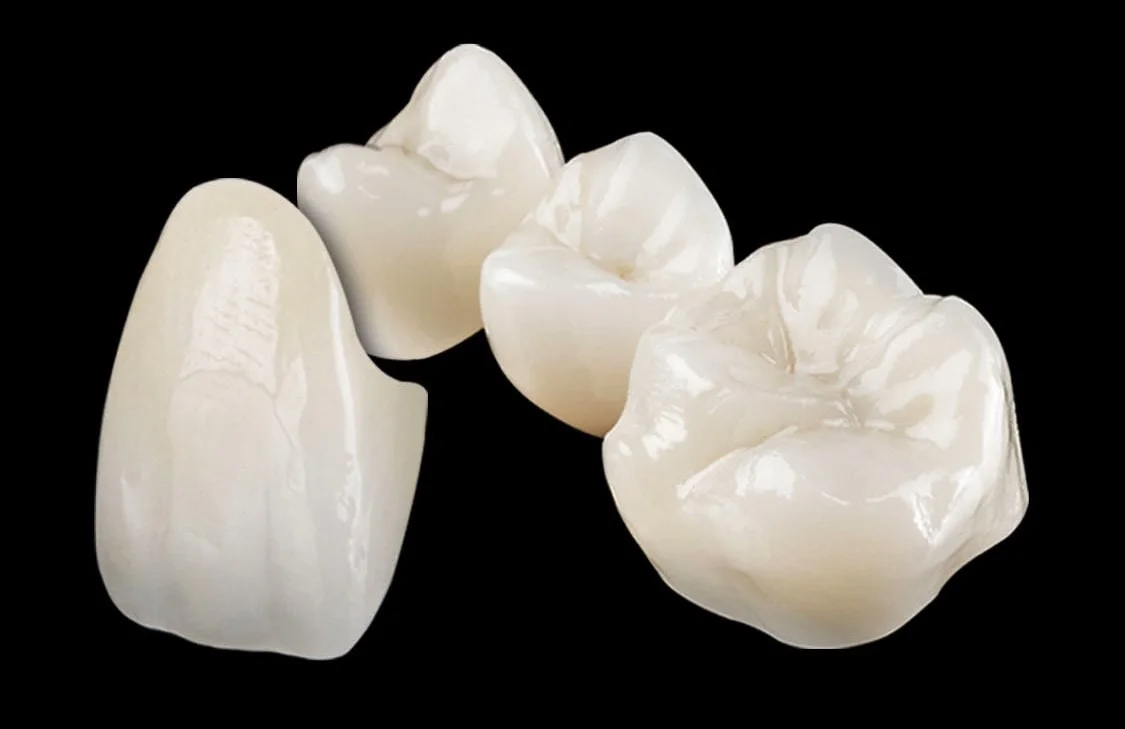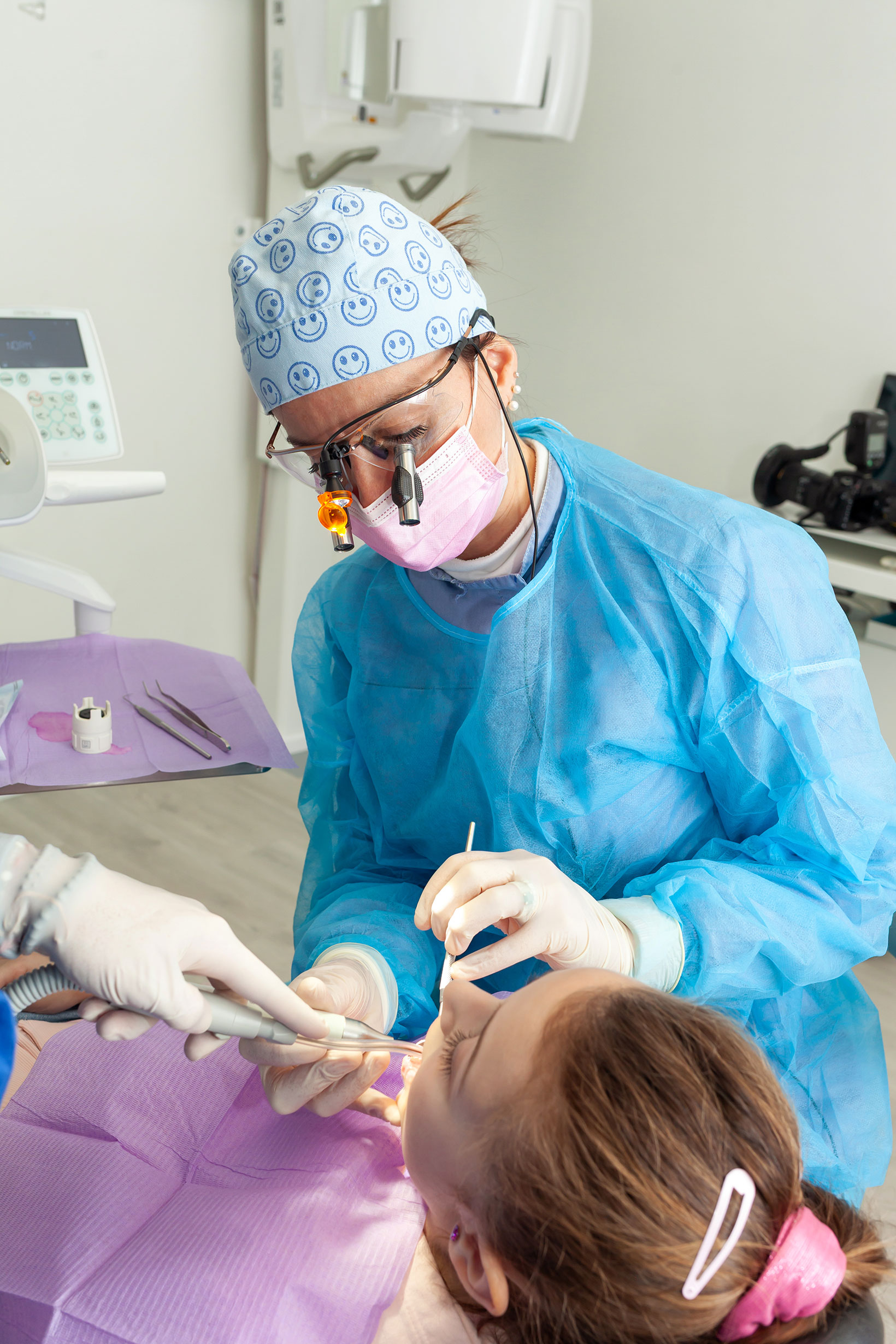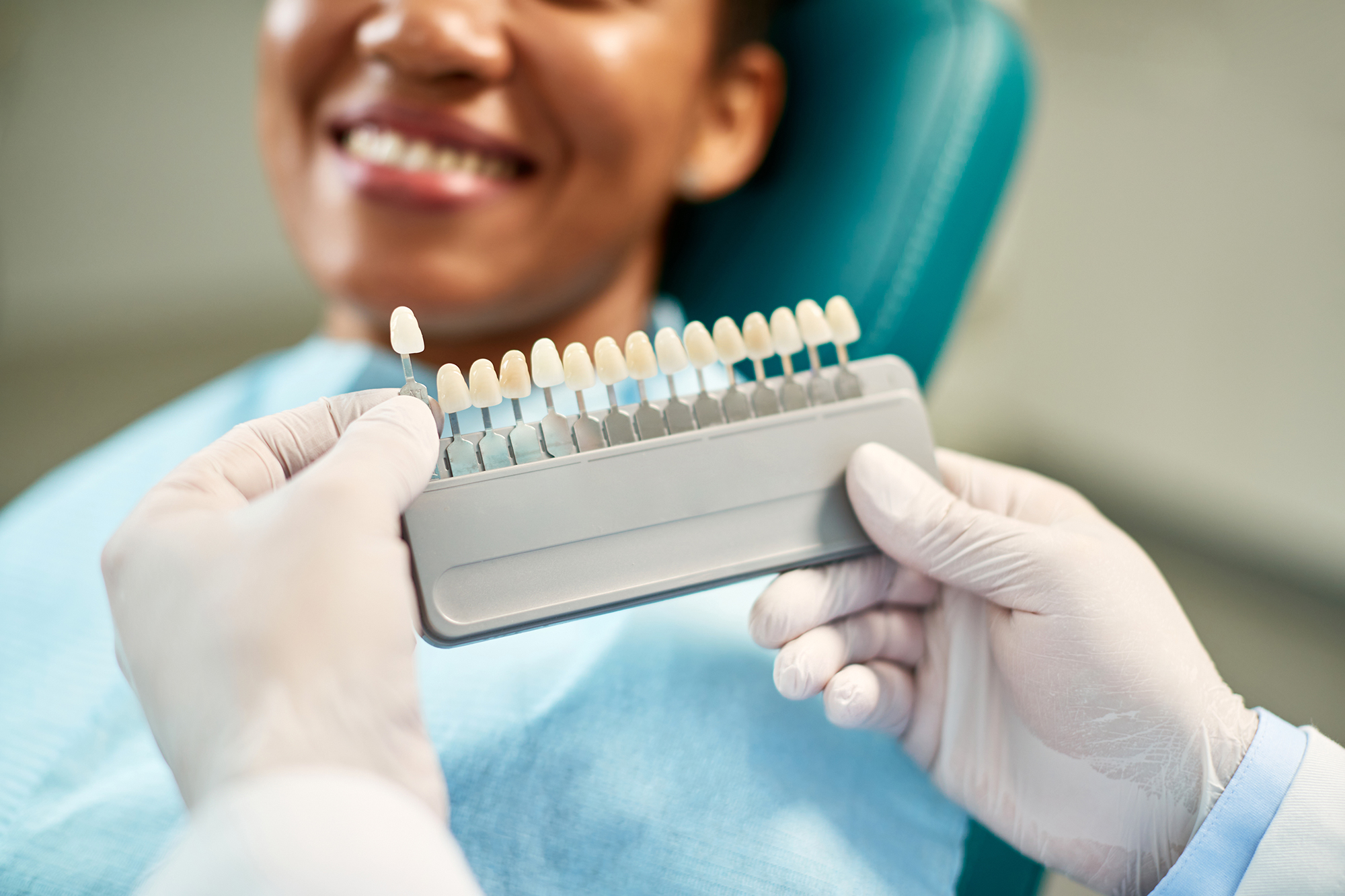Dental crowns have long been the preferred treatment option for repairing damaged teeth and fixing imperfections due to their ability to mimic the look and function of real teeth.
Today’s modern crown materials are more durable and realistic than ever, and there are a couple of options that dentists prefer above the rest. Porcelain-fused-to-zirconia and monolithic zirconia are the most popular for different reasons. We’ll discuss the pros and cons of each, and when a dentist might recommend them.

The Benefits of Zirconia
Prior to the early 2000s, dentists used crowns made of either metal or porcelain fused to metal. But metal was not aesthetically pleasing, and some patients were allergic to it. Scientists began researching how to build a better prosthetic dental material and discovered that they could start with zirconium, a corrosion-resistant metal that’s as strong as titanium. When combined with oxygen, zirconium turns into a ceramic-like material called zirconia, which is very strong and looks a lot like a natural tooth. Zirconia benefits include:
Strength. Zirconia is stronger, more durable, and longer-lasting than other crown materials, with the ability to last 20 years on average.
Texture. Zirconia is smooth so it doesn’t rub or scratch against adjacent teeth.
Biocompatible. Patients who are allergic to metals can have zirconia crowns without getting sick.
Aesthetics. Zirconia is naturally the color of real teeth and can be made to fit the size and shape of other teeth. It’s also stain-resistant to coffee, tea, or red wine.
When Are Porcelain Fused to Zirconia Crowns Recommended?
Porcelain fused to metal was once the gold standard for crowns because the porcelain overlay offered a more natural look to match adjacent teeth. However, sometimes metal allergies were a problem, and other times, the metal base showed through at the gumline.
Today, porcelain fused to zirconia (PFZ) offers the aesthetic benefits of both zirconia and porcelain, combined with the strength of zirconia. PFZ crowns are made by fusing a layer of porcelain to a zirconium dioxide core. They are strong and durable with a natural-looking appearance throughout the entire piece.
The downside to porcelain, however, is that it is vulnerable to chipping. Biting down on hard or crunchy foods can cause cracks or chips, which is more likely to happen when chewing with molars. For this reason – and because porcelain fused to zirconia looks so realistic — these crowns are usually recommended for front teeth.
When Are Monolithic Zirconia Crowns Preferred?
Monolithic Zirconia (MZ) crowns are fabricated from a single block of zirconia and do not have a porcelain overlay. They are highly resistant to fractures or chipping and able to withstand a high bite force. According to several articles in the British Dental Journal, monolithic zirconia’s great mechanical strength makes it the optimal choice for not only crowns, but for posterior fixed prosthetic dental bridges in patients who clench and grind their teeth.
In addition, the lack of overlay makes MZ crowns easier to set when there is little space between teeth (which is beneficial for placement on pre-molars and molars).
But while MZ crowns have a natural, tooth-like appearance and can be color-matched to surrounding teeth, they are slightly less translucent than PFZ crowns. As a result, they can look more noticeable or “fake” when placed in the front of the mouth.
Due to their strength and inferior aesthetic appearance, MZ crowns are usually recommended for back teeth.
Porcelain Fused to Zirconia Crowns
| PROS | CONS | |
| Aesthetics | Porcelain veneers have a realistic toothlike appearance, as they can be matched to the surrounding teeth’s color for a seamless blend. The zirconia base is also tooth colored. This makes them good for visible front teeth. | |
| Durability | Strong zirconia core resists fractures better than metal. | Porcelain is more likely to chip with heavy chewing, such as when using molars. |
| Biocompatibility | Safe for patients who are allergic to metal. | |
| Ease of Placement | Porcelain veneers make the tooth wider, so it’s harder to fit between back teeth. |
Monolithic Zirconia Crowns
| PROS | CONS | |
| Aesthetics | Can be slightly less translucent than real teeth, making front teeth appear fake. This makes them better on less visible teeth | |
| Durability | Very strong, and less likely to fracture than porcelain, so they are best for heavy chewing with molars. | |
| Biocompatibility | Safe for patients who are allergic to metal. | |
| Ease of Placement | The lack of porcelain overlay makes MZ crowns easier to set when there is little space between teeth (such as on pre-molars and molars). |
Zirconia Crown Cost
Most dental insurance plans cover at least part of the cost of crowns when they are needed to restore a tooth’s function due to a root canal, cracks, or severe decay. The percentage covered will depend on the insurance provider and plan. If the crown is solely to improve appearance, it is unlikely to be covered.
On average, out of pocket cost for both monolithic zirconia crowns and porcelain fused to zirconia crowns ranges from $1,000 to $2,500, and they last for ten to twenty years with proper oral hygiene. Most traditional crown materials last between five and fifteen years.

Choosing the Best Crown Material for You
While PVZ crowns win in the aesthetic category, monolithic zirconia crowns are stronger and tend to have fewer complications. In a clinical study comparing thousands of patients who had dental restorations, there were considerably more complications in PVZ prostheses than MZ prosthesis, with chipping being the most prominent complication in porcelain crowns.
When choosing the best crown material for your particular dental situation, it will depend on the location of the restored tooth and your aesthetic goals. Monolithic zirconia is often best for premolars and molars where most heavy chewing is done. For visible incisors and canine teeth, you may prefer porcelain fused to zirconia since it offers a more realistic look. However, your dentist should discuss your bite strength and any grinding or clenching habits that might compromise a porcelain crown.


